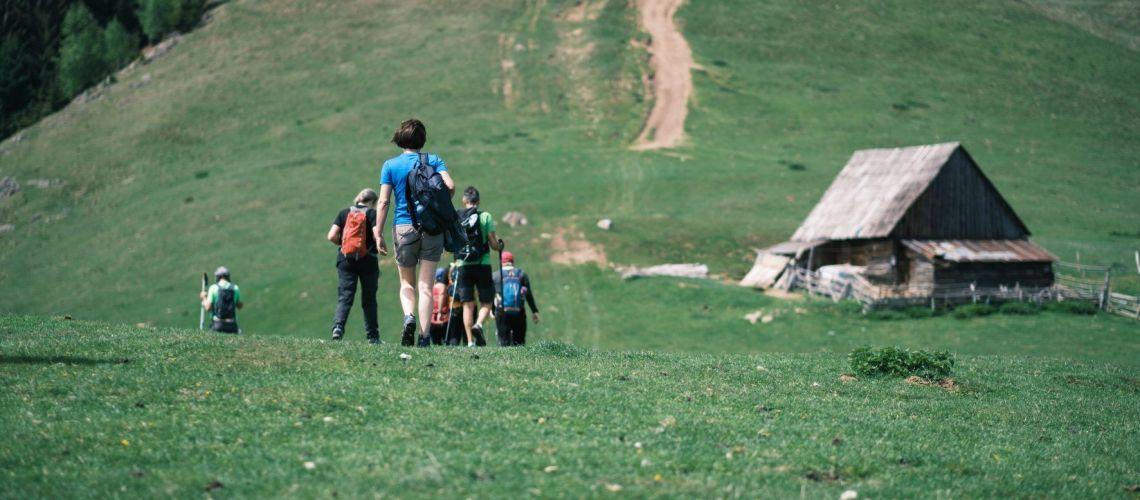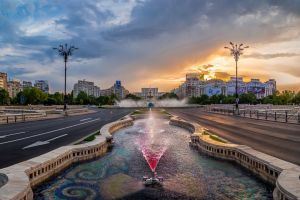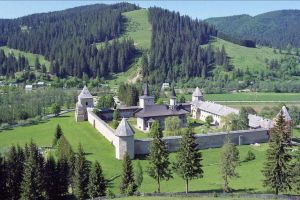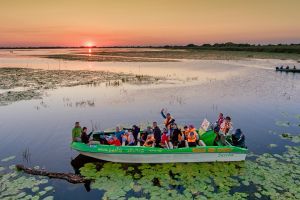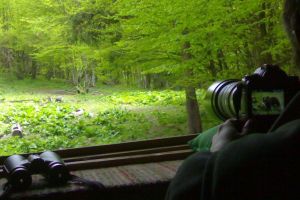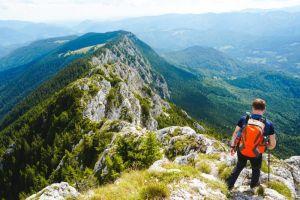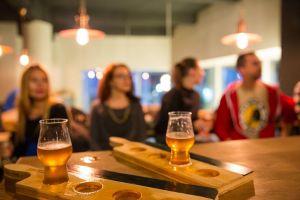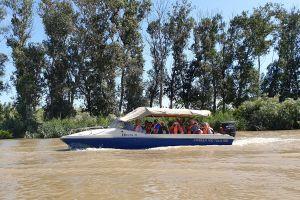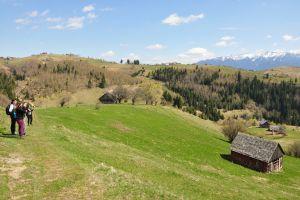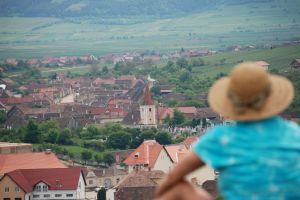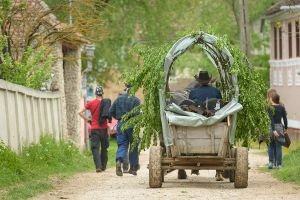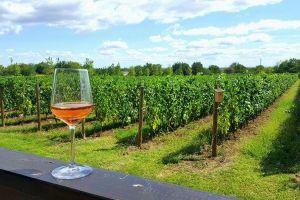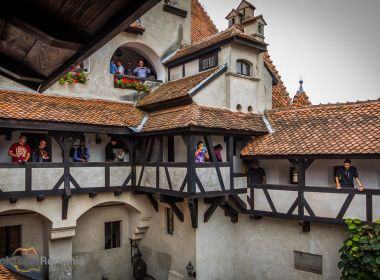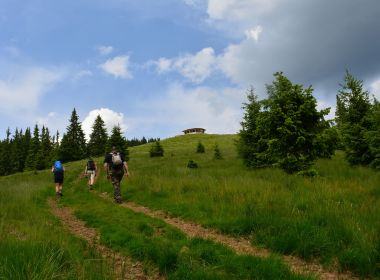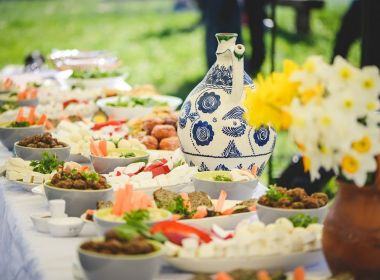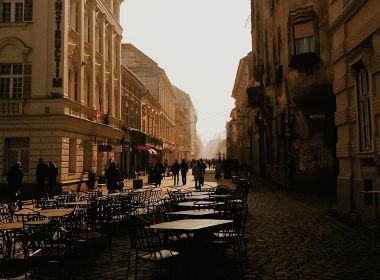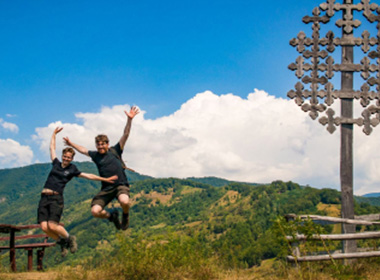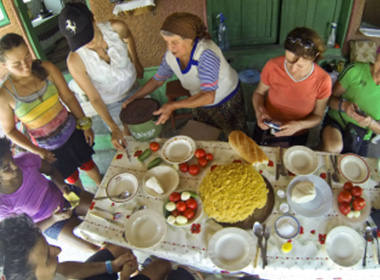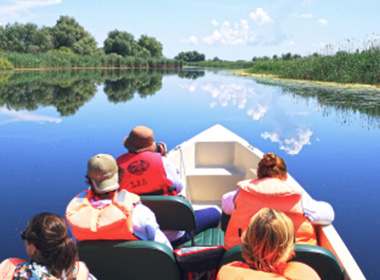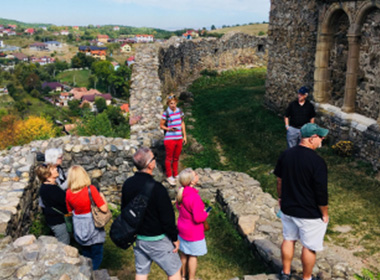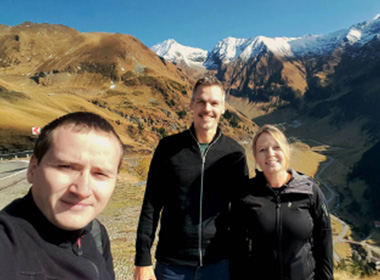What is the best time to visit Romania? Is Romania worth visiting during Summer? What about winter?
When is a good time to explore the main tourist attractions in our country, our famous castles, the famous region of Transylvania, the incredible Danube Delta or the wild Carpathian Mountains?
What's the best time to experience authentic Romanian culture and local life through sightseeing trips, unique traditions and cultural festivals?
Let’s find out and hopefully this article will help you decide the perfect time for your holiday here!
Romania has a temperate-continental climate with Mediterranean influences which means there are four distinct seasons with hot summers and cold winters. Even if our country generally has warm temperatures there is a time for everything:
- Spring is great for city breaks, sightseeing and visiting interesting UNESCO world heritage sites
- Summer is the best season for everything: sightseeing, outdoor activities, wildlife watching, exploring the Danube Delta, sunbathing on the Black Sea Coast, going to music festivals and more
- early Autumn is the best time of the year for wine tasting, food tourism and incredible views of the autumn foliage
- Winter season is a time for Christmas markets, holiday traditions and winter sports
In this guide we will dive deeper into what’s the weather like in Romania's four distinct seasons and best places to visit or activities tailored to each of them.
Since 2017 we want to make tourism better for everyone in our beautiful country and help you have a memorable holiday no matter what time of year you're planning to visit. So, let’s dive in:
Table of contents
- 1. General Tips for Finding the Best Time to Visit Romania
- 2. What is Romania like during Spring (March to May)
- Best places to visit in Romania during Spring
- 3. What is Romania like during Summer (June to August)
- Best places to visit in Romania during Summer
- 4. What is Romania like during Autumn (September to November)
- Best places to visit in Romania during Autumn
- 5. What is Romania like during Winter (December to February)
- Best places to visit in Romania in Winter
- Conclusion
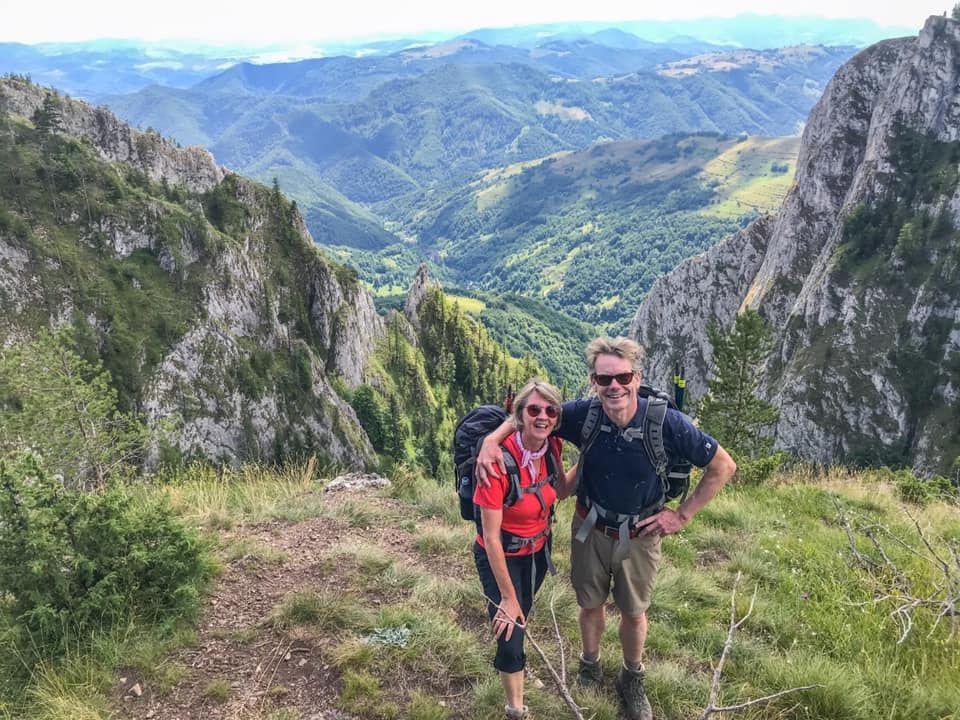
Our happy tourists enjoying Romania's good weather on a hiking trip
1. General Tips for Finding the Best Time to Visit Romania
At this point, everyone is aware of the changing weather conditions and extreme weather events happening due to climate change. Some countries are more affected than others, with prolonged heat waves or violent thunderstorms in the summer months.
Unsurprisingly, Romanian Summers are much hotter than they used to be and Bucharest is particularly affected by prolonged heatwaves especially in July and August which are the hottest months of the year.
But even so - things are not as bad as in other European countries such as Spain, Italy or Greece. And there’s no risk of wildfires or floods, especially in the main tourist areas.
Romania is roughly the size of Italy or half of Spain, and the Carpathian Mountains (reaching altitudes as high as 2,500m) divide our country into three main regions:
- Transylvania in the center
- Wallachia in the South
- Moldova in the East
This creates small weather variations that can take travelers by surprise. Luckily, you have a Romanian Friend to help :)
For example, in the Southern part of Romania you'll find vast plains and agrarian fields. So major cities like Bucharest, Timisoara, Craiova, Constanta and the coastal region by the Black Sea are generally hotter, with little rain, a lot of sunny days and little to no snow.
Inside the Carpathian arc in Transylvania (Brasov, Sibiu, Cluj-Napoca) it's colder in the mornings and evenings, with mild temperatures during the day and moderate heatwaves during Summer and medium snowfalls.
In areas and small villages in the Carpathian foothills around altitudes of 800m (famous for picturesque sceneries and traditional lifestyle), the weather is generally colder, windier and a little more unstable.
And if you're planning to go hiking in the high mountains (altitudes of 1,500m and above), expect sudden weather changes especially in Spring and Autumn, thunderstorms and heavy snowfalls.
Therefore, always check the Romanian official weather forecasts for the period you're planning to visit about one week in advance to be accurate.
Dress adequately for the average temperatures of different seasons, especially if you're traveling outside of major cities. And if something’s missing, don’t worry: there are lots of shopping malls in Romania with big brand names where you can find everything.
Local tip:we had some tourists on our hiking tours coming without proper clothing or dressed in sports shoes instead of hiking boots; we either refused to take them on the trip or did an easier trail because for us safety is our #1 concern - and we don't underestimate Romania's wild mountains
Having adequate sun protection (suncream, a hat, sunglasses) is mandatory especially if you’re planning to go hiking during Summer or in the Danube Delta.
Wherever you go in Romania, make sure to check for festivals, cultural events and public holidays. These may cause cities and small towns to get crowded, prices to go up in mountain resorts and limited availability for accommodations. Here’s a complete list of national holidays in Romania when tourist attractions are closed.
For more practical tips check our travel guide on how to visit Romania for the first time.
Now let’s see what’s the weather like in each season and what are our recommendations for places to visit and things to do in each.
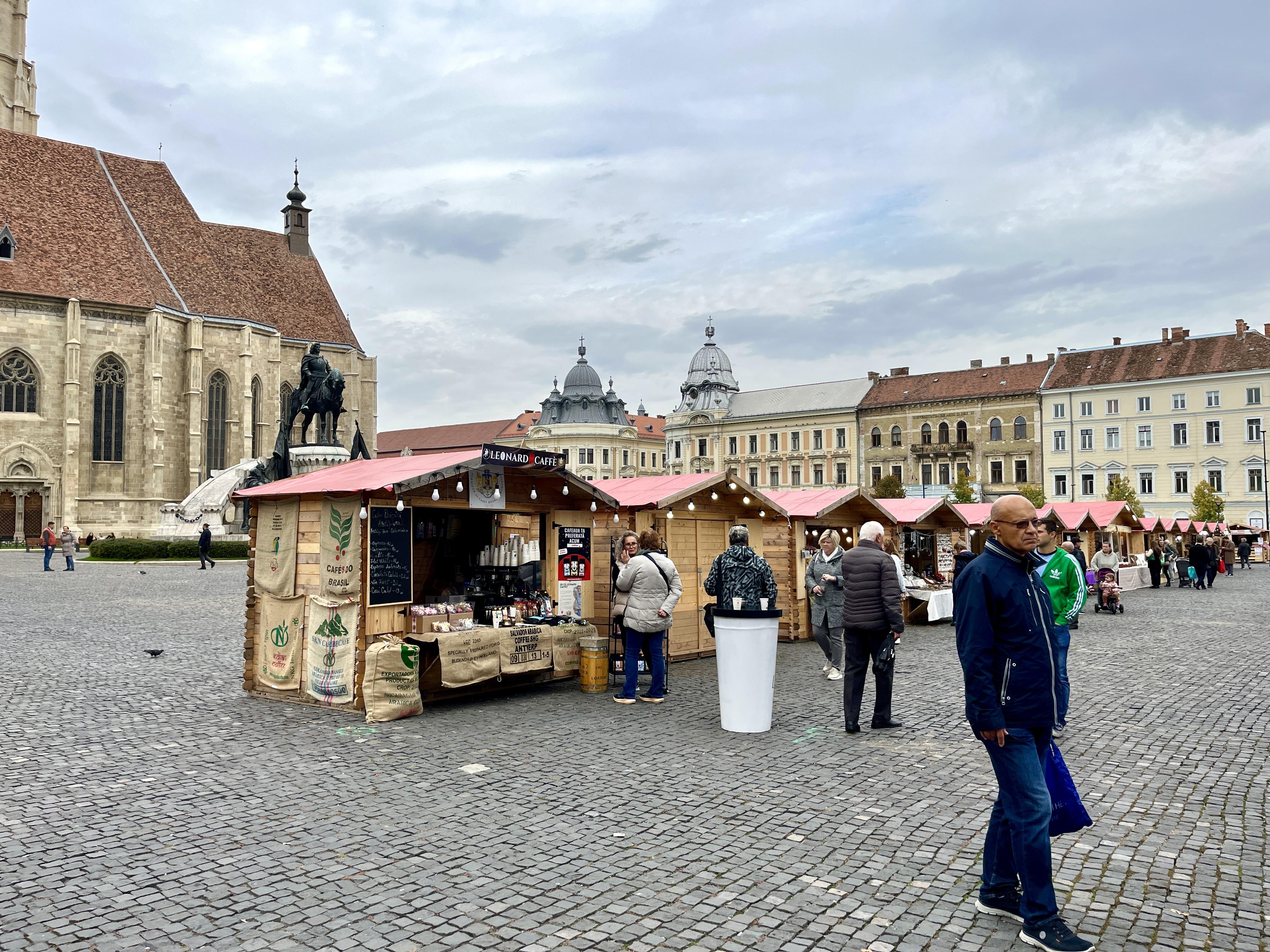
The city of Cluj is a good idea for a Spring city break
2. What is Romania like during Spring (March to May)
If you travel in Spring, you will find locals just as eager as you to get out of their houses after the gloomy winter months. This is a great time for a city break and sightseeing Romania’s famous tourist attractions.
You will see cities coming to life, trees in bloom and everything gradually becoming greener from one day to another as the average temperature starts rising, particularly in early April.
Romanians celebrate beginning of Spring with a special holiday on 1 March called Mărțișor. Folk traditions dictate men are supposed to give women small trinkets or tokens with a white and red thread symbolizing the union of love and warmth (Summer) with purity and energy (Winter). These are worn as brooches.
So if you’re a tourist, especially a woman, you might be greeted with flowers and these small trinkets, spreading the joy of the change of season. They’re also a great idea for a Romanian souvenir and you’ll see lots of them for sale on the main streets and squares in Romanian cities.
- Average temperatures in Spring high/lows in Celsius (Farenheit)
| March | April | May | |
|---|---|---|---|
| Bucharest | 12° / 2° (53.6°F / 35.6°F) | 19° / 7° (66.2°F / 44.6°F) | 23° / 12° (73.4°F / 53.6°F) |
| Brasov | 7° / -1° (44.6°F / 30.2°F) | 12° / 4° (53.6°F / 39.2°F) | 17° / 9° (62.6°F / 48.2°F |
| Cluj-Napoca | 10° / 0° (50.0°F / 32.0°F) | 16° / 4° (60.8°F / 39.2°F) | 21° / 9° (69.8°F / 48.2°F) |
Mornings are frosty and evenings are chilly. But during the day these mild temperatures make it perfect for walking holidays in major cities or in the countryside. And there are fewer crowds and prices are more accessible than the rest of the year.
In the past few years winter decided to make a dramatic comeback with surprise snowfalls and frost as late as April. But don’t worry, these don’t last long and by late Spring you can generally expect good weather everywhere in the country.
Best places to visit in Romania during Spring
While March is the perfect time for a Bucharest city break or one in Sibiu, Timisoara or Cluj-Napoca (all of which have airports with low cost flights from Europe), traveling around the country is also a good idea.
For example, there are many places to visit in Transylvania such as Sighisoara Citadel or the Saxon villages of Viscri and Biertan (also UNESCO World Heritage sites) where you can see locals getting more active as the weather gets warmer.
April-May is a great time for a trip in our country's traditional regions in the North. The wooden churches of Maramures or the painted monasteries in Bucovina are stunning against a backdrop of green hills and wild flowers.
In these regions, you can also experience authentic Romanian culture and traditions with locals eager to welcome you because it’s in our culture to do so. Everyone is happy to get out of the house, reconnect with nature and others, and have a good time.
Romanians are Christian Orthodox and the vast majority of the population, especially in rural areas, is devout and observes religious holidays. So Orthodox Easter is a major holiday in our country.
In 2025 this holiday will be celebrated on 20 April so if you’re lucky to travel during this time you’ll get to see beautiful Easter celebrations and rituals. The best way to do this is to go to any church on Saturday at midnight to see locals gathering for church service.
Local tip:Good Friday and Easter Monday are national holidays so everything is closed and most locals tend to book weekend-long holidays. So you may not find accommodation or tour guides during this period unless you book 2-3 weeks in advance!
May 1st - Labour Day, also a public holiday - marks the opening of the seaside holiday season. Young people flock to famous Black Sea resorts - even if it’s cold and windy! - to celebrate. In Mamaia and Vama Veche, weekend-long parties on 1 May are a tradition.
Mid to late May is a great time for a trip in the Danube Delta because birds are returning to their home for the summer season to breed.
And speaking of wildlife, as the weather gets warmer animals start being more active too. Brown bears come out of their winter hibernation around mid-April, depending on how soon the weather gets warm enough for them to feel it. That’s when our popular bear-watching tour starts to run:
Late spring is also a good time to go hiking in the Romanian Carpathian Mountains especially in mid-level mountains of up to 1,800m altitudes such as Piatra Craiului close to Brasov or Apuseni close to Cluj-Napoca.
Above that and in the high mountains (eg. Fagaras, Bucegi) there is still a lot of snow and we don’t recommend going there unless you’re well experienced hiking with crampons, ice poles and in winter conditions.
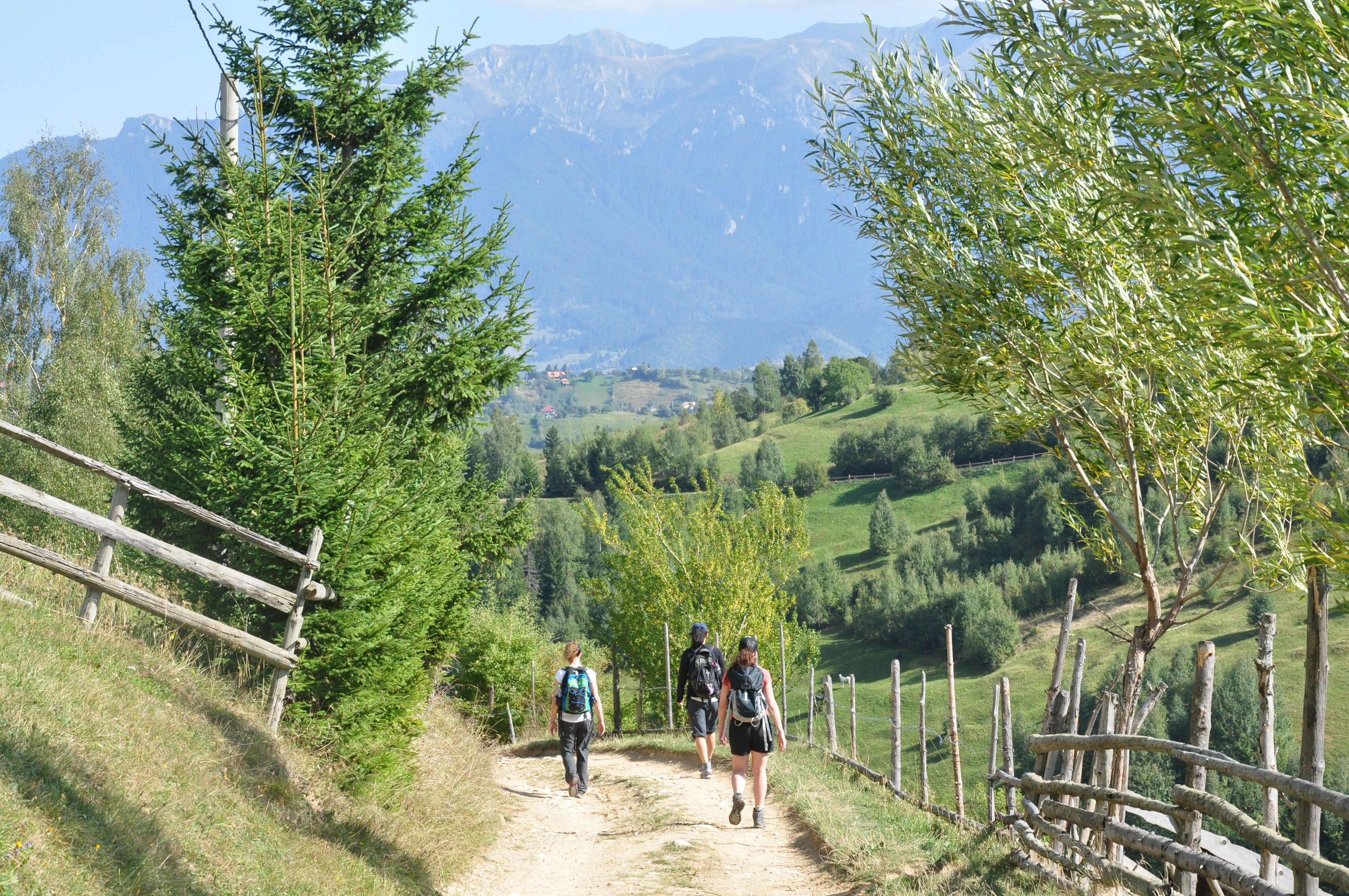
Summer is the high season for tourism in Romania and it's the best time to do everything!
3. What is Romania like during Summer (June to August)
Like everywhere else in Europe, Summer is the best season and most popular time to visit Romania. Since it's the time for school holidays, it's also when most holidays with kids in Romania take place.
While high temperatures have been recorded as early as late May in recent years, early Summer is typically rainy, especially as you get closer to the Carpathian Mountains. But June usually has comfortable temperatures all over the country which makes it the perfect time for your holiday.
Expect high temperatures mostly in July which is the hottest month of the year and early August. Then they cool down a bit in late summer, usually after the middle of August.
The mountains keep cool all summer long making mountain resorts and villages nearby the best places to seek refuge from the heat in big cities.
Consider the city of Brasov which is 3h away from Bucharest. With Bran Castle aka Dracula’s Castle nearby, the mountains and popular sights in Transylvania, this part of Romania is the most most popular tourist destination.
Temperatures are the highest South of the Carpathian Mountains but the good news is that average temperatures are more tolerable in the seaside resorts by the Black Sea coast and in the Danube Delta thanks to the sea breeze. But having Sun protection is a must!
- Average temperatures in Summer high/lows in Celsius (Fahrenheit)
| June | July | August | |
|---|---|---|---|
| Bucharest | 27° / 16° (80.6°F / 60.8°F) | 30° / 18° (86.0°F / 64.4°F) | 30° / 18° (86.0°F / 64.4°F) |
| Brasov | 20° / 13° (68.0°F / 55.4°F) | 23° / 14° (73.4°F / 57.2°F) | 22° / 14° (71.6°F / 57.2°F) |
| Cluj-Napoca | 24° / 12° (75.2°F / 53.6°F) | 26° / 14° (78.8°F / 57.2°F) | 26° / 13° (78.8°F / 55.4°F) |
The hot summers we had in recent years were particularly hard on our capital where the maximum temperature surpassed 40°C for several days in July and August. No wonder everyone is looking to get out of the city and escape the heatwaves! But luckily there are lots of things to do in Bucharest to protect yourself from the heat including several huge parks to take shelter.
If it does rain in the July-August interval which is the hottest time of the year these will most likely be short and intense thunderstorms. But closer to the mountains, for example, the area around Brasov is prone to yellow warnings of rains and thunderstorms.
The small town of Sighisoara
Best places to visit in Romania during Summer
Peak season for tourism in Romania is July - September. Since 2017 when I started Romanian Friend, the #1 advice I want to share with you is to book everything 3 weeks in advance if you’re planning to travel in this period.
Why?
Because Romania’s tourism infrastructure (hotels, accommodation in rural areas, tour guides, roads, etc) is underdeveloped and very fragmented. And after 2 hard years of Covid and the Ukraine war scare, things got worse. Many businesses closed shop or became complacent with their services while increasing prices to keep up with inflation and rising costs.
So when massive demand concentrates in a short period of time - a lot of travelers miss out on booking value-for-money accommodation, the trips and experiences they want. That's why making plans after you arrive at your destination is not a good idea especially in Brasov or Sibiu. Oh, and expect prices to be higher if booking on short notice…
As I said before, Summer is the best season for sightseeing, ticking off the best things to do in Romania and outdoor activities.
Late June makes Romania a fruit and vegetable paradise as seasonal produce becomes widely available. Get ready for a cultural shock and incredible tastes on our unique farmers’ markets tours.
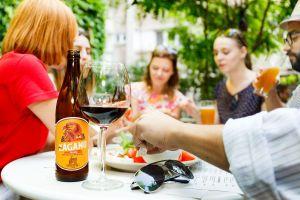
Bucharest Street Food Tour: Farmers' Markets & Hidden Streets
Start from: University Square

Cluj-Napoca Food Tour: Food Markets, Regional Dishes and Coffee Culture
Start from: Cluj-Napoca
This is also when lots of cultural events and street fairs, music festivals and other happenings take place in all major cities, but also in rural areas. The arts and music festivals in Romania are gaining in popularity attracting more and more people every year. I don’t know about you but for me going to these events is the best way to check out local life and discover things I normally wouldn’t!
Speaking of music festivals, Summer is also the ideal time to experience the vibrant Bucharest nightlife scene. Evenings are warm and perfect for outdoor parties on rooftops, in the posh clubs by Herestrau Lake or in tucked-away urban gardens. In late Summer everyone is looking to get out now that the heat
A quick visit to the Black Sea Coast is always a good idea in this period. The peak season for holidays in seaside resorts is 15 July - 30 August when everything is booked waaay ahead. This is also a good time to visit the Danube Delta, when nature is at its best, or even to book a Danube cruise through Romania that will take you from the Danube Gorges all the way to the Danube Delta.
Summer months are also perfect to go hiking in Romania and explore the many natural attractions in our country. Hikers will flock to summit the highest peak in the country Moldoveanu at 2,544m high in Fagaras mountains, or to ‘ride the crest’ of Piatra Craiului, which can’t be done in safe conditions earlier than late June.
And these are also the best months (up until early Autumn) for wildlife watching trips. This is when animals are most active and on our specialised tours you can see brown bears, bisons, wild boars, eagles and much more.
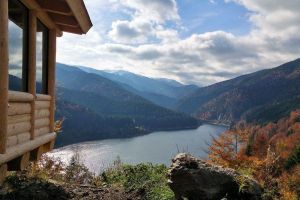
3-Day Hiking & Wildlife Trip at an Eco-Luxury Private Cabin in Fagaras Mts
Start from: Rucar, Arges county
I think Autumn is the best time to travel in Romania and explore the Carpathian Mountains
4. What is Romania like during Autumn (September to November)
Having four distinct seasons means Spring and Autumn are transitional periods easing into very cold or hot temperatures. Early Autumn feels like an extra summer month in recent years, so you can expect comfortable temperatures during the day.
Since it takes longer for temperatures between seasons to change, there is no difference between early September and the month of August. In recent years due to the warming climate and high temperatures it brings, it was early October that marked the beginning of autumn instead of September.
As we move into October, mornings and evenings become chillier and rain happens more often. In the mountains it gets colder faster while the South still sports the highest temperatures. From early October onwards daylight shortens but the sunsets are longer - and spectacular!
Late Autumn and November is generally humid, rainy and cloudy. While it’s not a good idea to visit rural areas or the Danube Delta in this period, you can still do lots of sightseeing. And everything will be cheaper since there are fewer people visiting!
- Average temperatures in Autumn high/lows Celsius (Fahrenheit)
| September | October | November | |
|---|---|---|---|
| Bucharest | 25° / 13° (77.0°F / 55.4°F) | 17° / 7° (62.6°F / 44.6°F) | 9° / 2° (48.2°F / 35.6°F) |
| Brasov | 18° / 10° (64.4°F / 50.0°F) | 14° / 6° (57.2°F / 42.8°F) | 7° / 0° (44.6°F / 32.0°F) |
| Cluj-Napoca | 21° / 9° (69.8°F / 48.2°F) | 15° / 4° (59.0°F / 39.2°F) | 8° / 0° (46.4°F / 32.0°F) |
That being said, I think the perfect time to explore Romania is from the end of September to late October. Why?
55% of our land surface is covered by the Carpathian Mountains with vast swathes of forest-covered hills. So when the fall foliage starts we’ve got so many beautiful places with picturesque sceneries you’ll be blown away!
Just take any tour in the countryside, or look at the pictures below, and you’ll see what I mean.
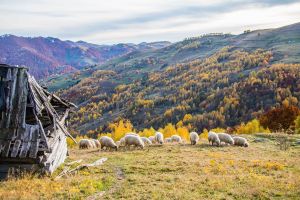
Picturesque Hiking Trip: Apuseni Natural Park, Rural Life & Scenic Picnic
Start from: Cluj-Napoca
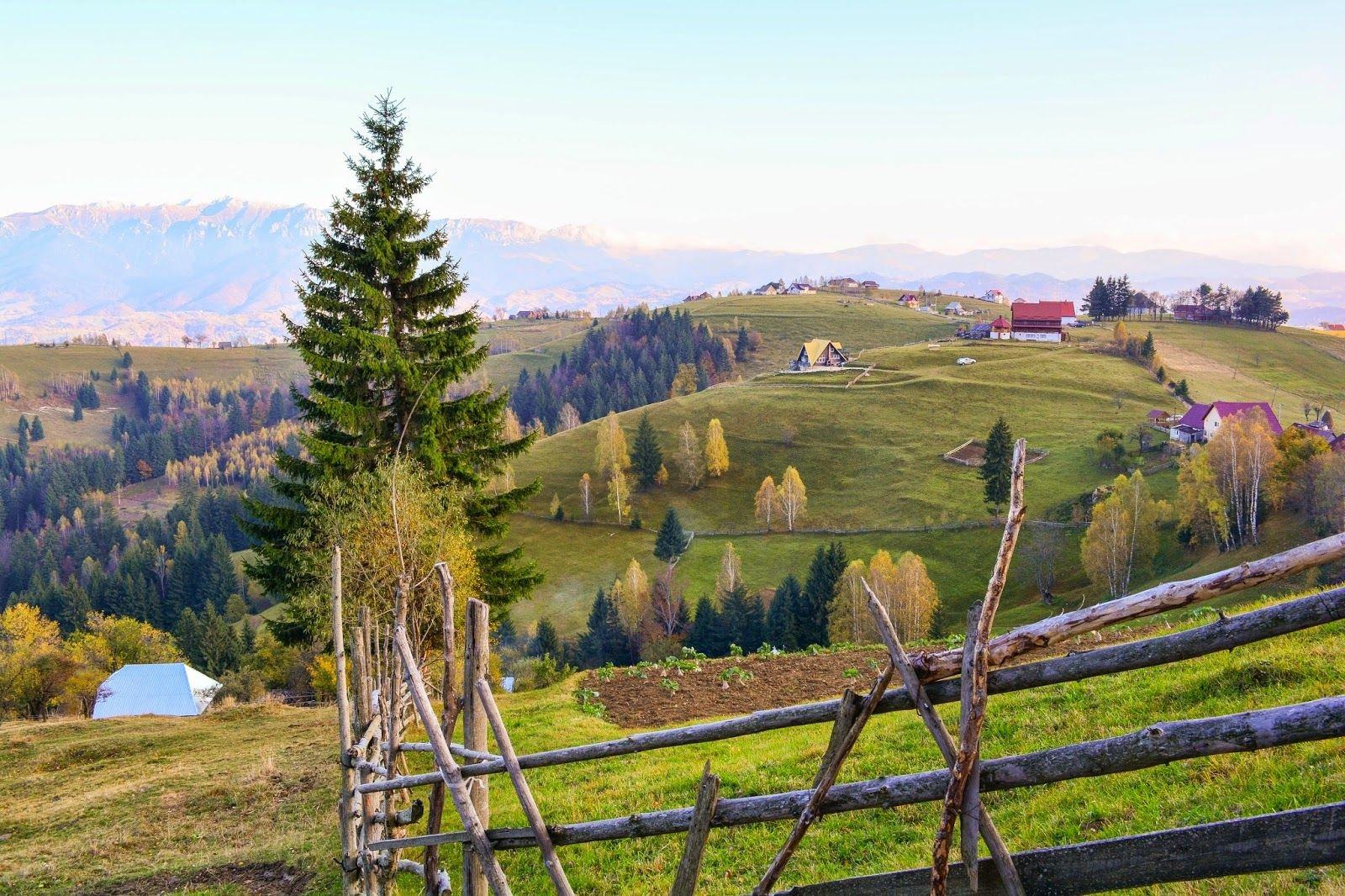
The area around Brasov is a great place for picturesque views
Best places to visit in Romania during Autumn
Autumn is harvest season which means it’s a great time to venture out in the Romanian countryside and experience local culture and gastronomy. Locals are eager to show off their produce and that’s why on our tours we always include home-cooked meals and visits to small food producers.
These are the best months to visit the the beautiful vilages of Magura, Pestera, Ciocanu and Sirnea around Brasov, or the area around Sibiu known as Marginimea Sibiului. Here a dozen or so villages are known for their traditional lifestyle and gastronomic talents. Brunches are held in the yards of Saxon churches every time in a different location.
You can find a traditional festival dedicated to food and sustainable agriculture all over the country up until late October. A more immersive experience in rural areas may include rides in horse-drawn carts in the village, or taking part in fruit or vegetable picking.
This is also the best time of the year to discover how good Romanian wines are. In the Dealu Mare region 1,5h away from Bucharest the weather conditions are most favorable for vines and wine making. So this is naturally a great place for premium wine producers to show their 'behind the scenes' - and they're happy to welcome you for a wine tasting anytime of the year!
Halloween is not a traditional holiday in Romania but locals have adopted it because, hey - it’s another reason to celebrate! So you’ll see Halloween decorations in major cities.
Lots of tacky Dracula parties and themes too, especially at Bran Castle which offers special Halloween celebrations – I’m not a big fan of those, but to each his own I guess...
By late October and early November you can expect light snowfall in the Carpathian Mountains above 2,000m altitudes. But anything below that is still good to explore. And during this time of the year most wild animals including brown bears retreat and prepare for the upcoming winter months, so it's not a good time for wildlife tours.
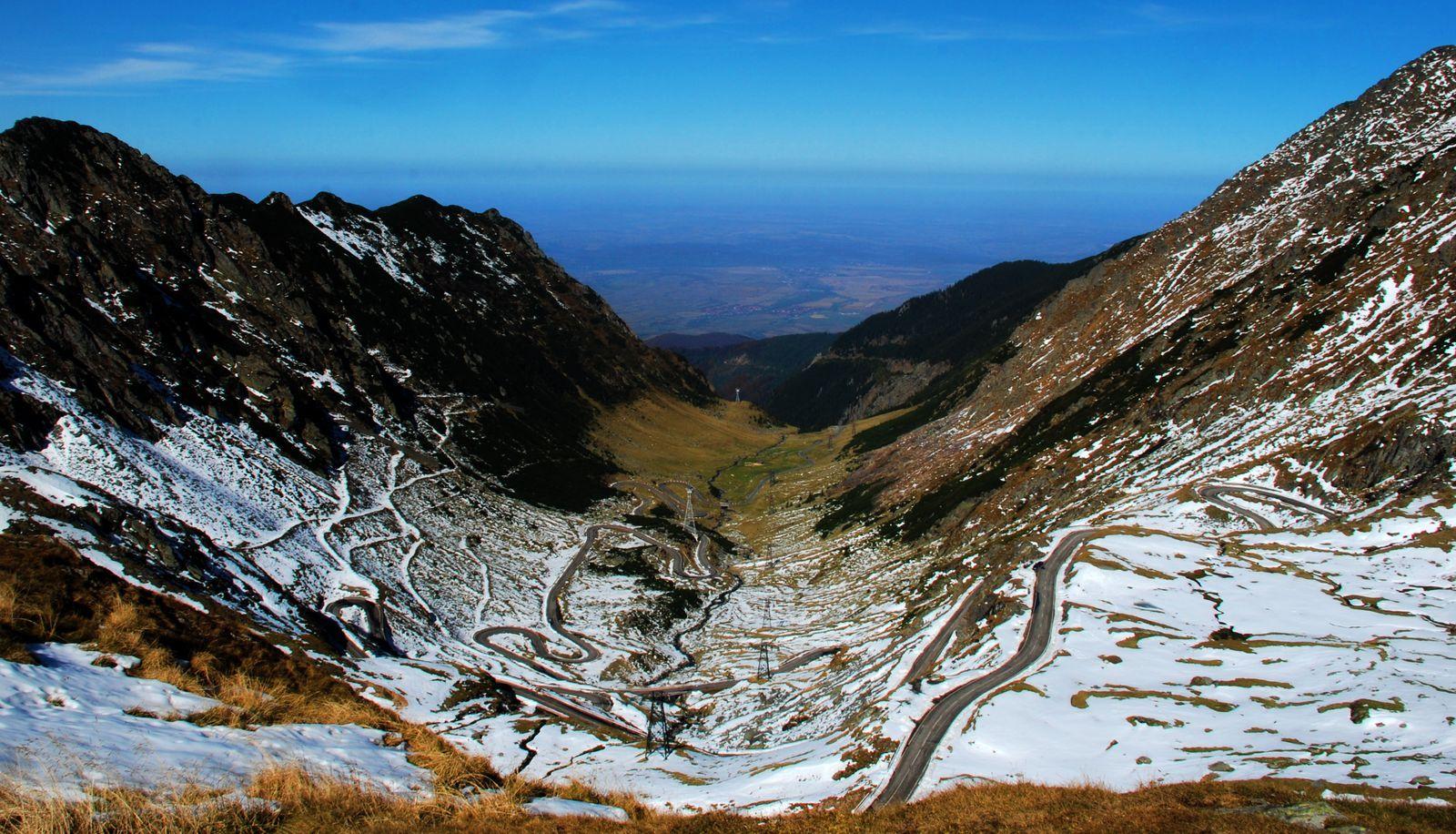
The spectacular Transfagarasan Road
5. What is Romania like during Winter (December to February)
Winter in Romania is magical for many reasons, even if temperatures drop below 0 Celsius all over the country making it challenging to stay outside for too long!
The main reason for this is because Christmas in Romania puts the entire country into a festive mood for almost 3 weeks and people don't stay indoors despite the low temperatures!
In recent years we experienced mild winters especially in major cities, but in other cities like Brasov or Sibiu and areas close to the Carpathian Mountains you can expect heavy snowfalls and freezing temperatures.
January and February are the coldest months of the year. While in January snowfalls are still expected, February is similar to November: gloomy and overcast, with snow quickly turning into drizzle.
- Average temperatures in Winter high/lows Celsius (Fahrenheit)
| December | January | February | |
|---|---|---|---|
| Bucharest | 4° / -2° (39.2°F / 28.4°F) | 3° / -4° (37.4°F / 24.8°F) | 7° / -2° (44.6°F / 28.4°F) |
| Brasov | 3° / -4° (37.4°F / 24.8°F) | 3° / -3° (37.4°F / 26.6°F) | 5° / -3° (41.0°F / 26.6°F) |
| Cluj-Napoca | 2° / -4° (35.6°F / 24.8°F) | 1° / -6° (33.8°F / 21.2°F) | 4° / -4° (39.2°F / 24.8°F) |
The combo of mountains, snow and low temperatures make Romanian ski resorts very attractive, most of which are filled to the brim. Book a room ahead if you want to travel to the mountains in winter.
Bran Castle during Winter? What a great idea!
Best places to visit in Romania in Winter
This is a very busy season for Romanians: many visits to family and friends, lots of rituals and celebrations, and non-stop food.
Our article on winter in Romania will give you a better idea of what’s going on and what to visit during this time of the year.
The key thing to remember is that there are many public holidays starting from early December until early January when shops and tourist attractions are closed.
Christmas markets usually open around this date in all major cities. Local producers and artisans will sell their best products, alongside mulled wine, traditional pies and deserts. So if you’re are a Christmas market “collector” you will have a great time in Romania.
Hotels and B&Bs in popular mountain resorts such as Poiana Brasov or Sinaia are usually booked weeks in advance during this period as lots of people want to spend the winter months close the mountains and get busy with winter activities.
The same goes for the traditional regions of Maramures and Bucovina known for their folk traditions around Christmas and offering many options for outdoor activities.
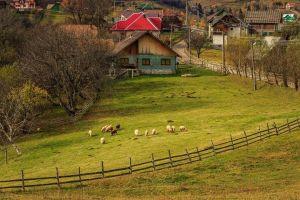
3-Day BEST of Transylvania Tour: Brasov, Sighisoara, Bran & Viscri
Start from: Bucharest
So the month of December and especially around Christmas time is the busiest time to visit Romania - so make your plans in advance.
January and February on the other hand are the best months for winter activities and sightseeing and there are fewer people everywhere which also means prices are reasonable again.
Now is a great time time to visit Romanian castles and medieval towns such as Sighisoara or Medias. Just keep an eye on the weather forecast and dress adequately!
Conclusion
With its temperate continental climate, similar to countries in Central Europe, Romania is a great choice all year round depending on your travel interests.
Each season is different and has its own opportunities and activities, and I hope this article helped you see this.
Like I said, I always prefer autumn in Romania. The weather is warm but not too hot, the food is terrific and the autumn foliage spectacular.
So if you need help with planning your trip don’t hesitate to contact us, that’s what we’re here for!
Your Romanian Friend,
Marius
